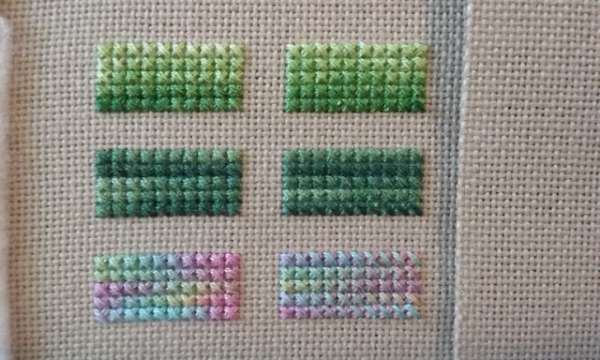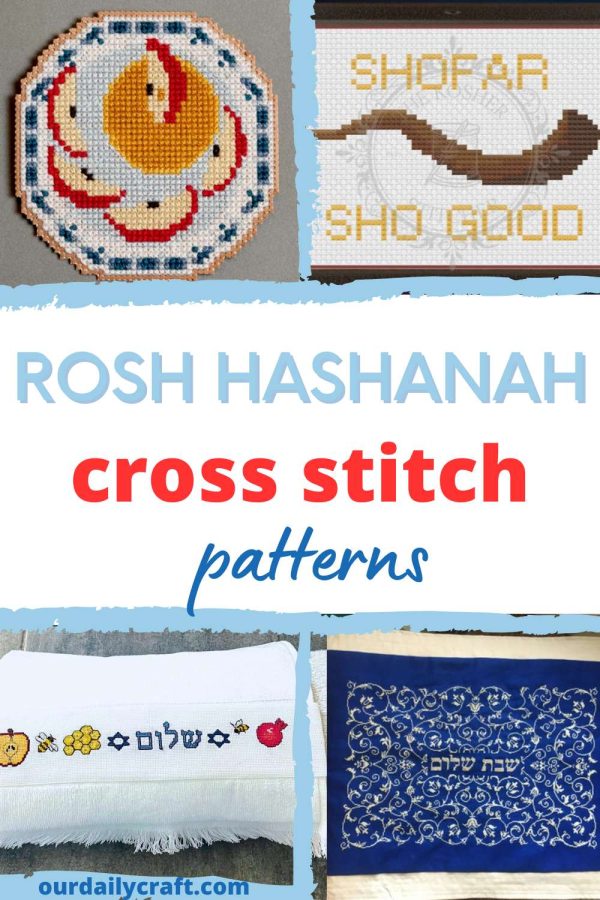 I love the look of variegated cross stitch floss and how it makes it possible to stitch with a variety of colors without changing thread, giving your project more depth and a more complex look without you having to do anything different.
I love the look of variegated cross stitch floss and how it makes it possible to stitch with a variety of colors without changing thread, giving your project more depth and a more complex look without you having to do anything different.
Or at least not much different. I recently came across this blog post from The Copper Fox all about how to use variegated floss and it noted that many people would say it’s a good idea to complete a whole stitch (when you’re stitching whole cross stitches) with the floss before going on to the next stitch. Most of us stitch row by row, but of course if you do that with variegated yarn, it could change color along the way and you’ll end up with stitches that are half one color and half another color or a different shade.
Of course that makes total sense but I’d never thought about it.
The post includes swatches with different kinds of variegated threads to show the different between working stitch by stitch or row by row, and it doesn’t make a huge different over the small area shown but I can see how it might make a difference if you had really long rows or if you just want to make sure your stitches are a single color whenever possible.
In addition to this experiment, the post talks about other ways to work with multicolored floss, including deliberately mixing the colors among the strands of floss you are stitching with and stitching in a different order instead of right to left and top to bottom (or whatever direction you typically work) to get different effects from the thread.
It’s fun to geek out on this stuff because it can make a difference if you want to play with it, or you can just stitch on without giving it much thought, and both will give you good results.
Check out all the experiments at The Copper Fox.
Do you do anything different when you stitch with variegated floss? I’d love to hear about it!
[Photo: The Copper Fox]
 Rosh Hashanah is the Jewish New Year celebration, and it’s a time full of special symbols and meaningful happenings that are perfect for stitching. Anything with a bee or honeycomb, apple, pomegranate or challah on it would be a great choice for stitching this time of year.
Rosh Hashanah is the Jewish New Year celebration, and it’s a time full of special symbols and meaningful happenings that are perfect for stitching. Anything with a bee or honeycomb, apple, pomegranate or challah on it would be a great choice for stitching this time of year.